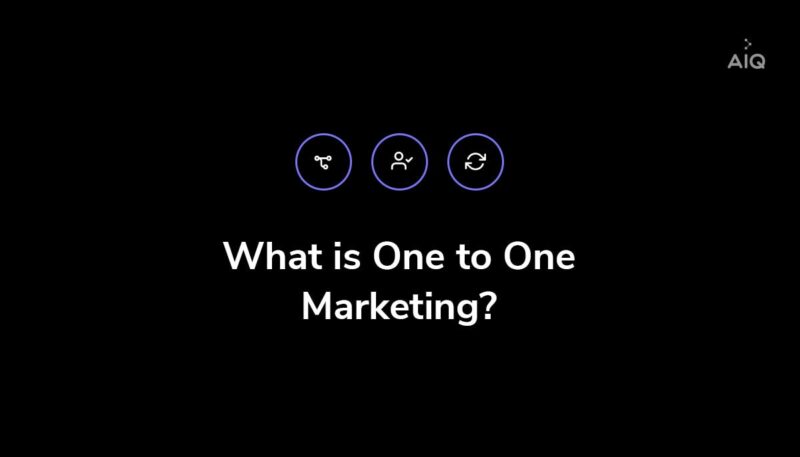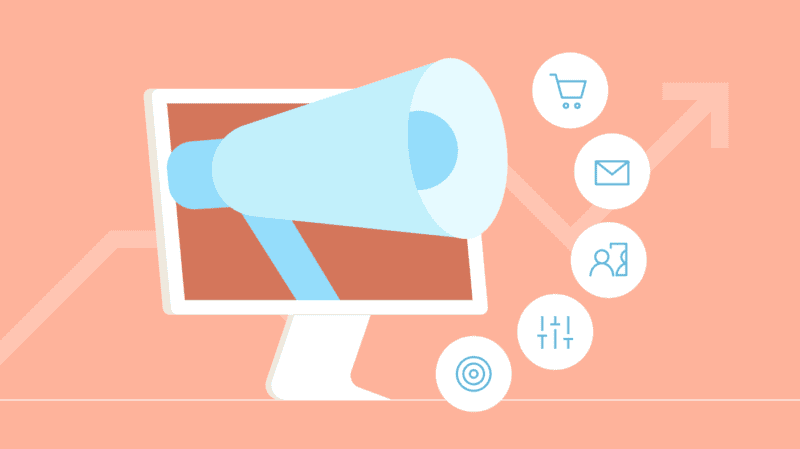What is One to One Marketing?

Nearly 30 years ago, Don Peppers and Martha Rogers published one of the most important business books ever written: “The One to One Future: Building Relationships One Customer at a Time.” Peppers & Rogers predicted a future where brands would use one to one marketing to personalize customer communications and interactions at scale.
Their predictions were founded on the premise that the internet and ecommerce would help brands understand their customers better than ever before—by giving access to an unprecedented depth and breadth of customer data and segmentation.
What was once visionary is now mainstream. To succeed in serving the modern, connected consumer brands across every industry, one must embrace one to one marketing in their marketing campaign as a means to serve customers in the way they demand—or those customers will simply switch to a competing brand that does.
In this post we’ll define one to one marketing, what it can help you achieve, why it’s an imperative marketing investment, and how to go about achieving it.
What is One to One Marketing?
One to one marketing goes by many names. It’s referred to as personalized marketing, individual marketing, or “marketing to a segment of one.” At ActionIQ, we often talk about it as personalization at scale.
Regardless of what you call it, the idea is the same: using the insights you’ve gathered about your customer’s preferences and your prospects to deliver personalized interactions and messages, content, recommendations and offers.
These are the interactions that define a big portion of your customer’s overall experience with your brand. That’s why one to one marketing is critical to creating great customer experiences and creating greater customer loyalty.
The best customer experiences powered by one to one marketing make consumers feel that your company or brand:
- Effectively anticipates their needs
- Communicates using content, messaging and personalized recommendations that are relevant and tailored to individual customers’ needs
- Helps customers achieve a goal or task, or get something they want
Building Sustainable Competitive Advantage
Brands who use the principles and personalization efforts of one to one marketing to deliver outstanding individual customer experiences see a 20% lift in business value, according to Gartner. According to a McKinsey survey, 41% of retailers said implementing personalization initiatives drove a 50-100% increase in revenue, while another 15% saw revenues grow a remarkable 100-300%. Marketers also achieved up to 50% reduction in acquisition costs and a 10-30% increase in the efficiency of marketing spend.
As if those overwhelming benefits aren’t enough, consider this: The kinds of gains achieved by successfully executing a personalized marketing strategy tend to be lasting—moving the needle not only on revenues and profits, but also on the most important customer-centric KPIs such as customer lifetime value (CLV), customer loyalty and retention rate, net promoter score (NPS) and more. One to one marketing is simply the stuff of a lasting competitive advantage that every company should seek to attain.
Customer Experiences Have Eclipsed the Four P’s of Marketing
The modern consumer thinks and shops differently than consumers did in the past. And this fundamentally changes the way you, the marketer, should approach your marketing plan. Take the four P’s of marketing, for instance—product, price, place and promotion. The first two P’s have now been clearly eclipsed by experiences: 84% of consumers say their customer experience is more important than a brand’s product or services, and 66% of customers prioritize a personalized experience over price.
Place? Even that’s been trumped by experiences. You’d better have what the customer wants, in the place they want it (over their mobile phone, delivered to their home, call center, or brick and mortar, etc.), when they want it. Or you’ll fall short of expectations.
And what about promotion? There’s so much noise in the consumer’s life across so many touchpoints. Messages need to be hyper targeted and ultra relevant, or your promotions will never have a chance at cutting through.
All these statistics underline the imperative every company is facing: brands must compete on customer experience and building better customer relationships. Putting the customer at the center of every interaction is no longer a consideration, but a requirement. And nothing can be more customer-centric than personalized one to one customer experiences.
Four Steps to Enabling One to One Marketing
Implementing one to one marketing to your target customer in your organization can seem like a daunting and complex challenge. By breaking it down into four fundamental components, your organization can achieve its personalization and CX goals for one to one marketing by tackling one component at a time. ActionIQ’s partners at McKinsey call this The Blueprint for Personalization at Scale:
Data
Unifying your data is the first, foundational step to achieving your one to one marketing strategy. This means creating a resolved golden record for each customer, and then capturing and tying back relevant customer data (from demographic to transactional to behavioral segmentation) to each record.
Modern enterprises typically use identity resolution techniques as well as their customer data platform (CDP) to achieve these data goals on the way to enabling one to one marketing capabilities.
Decisioning
One-off, manually intensive analysis won’t cut it anymore. For one to one experiences at scale, you’ll need to productionalize your analytics with some type of marketing automation.
This means the ability for marketers and CX pros to rapidly create micro segments and deploy campaigns on the fly. It also means harnessing the power of machine learning and AI to own steps in your scaled personalization processes—which can happen in batch or even in real time.
The data store that owns customer data (often the CDP) is a great foundation for executing decisioning and analytics that support your one to one marketing.
Design
Data and decisioning are critical—but your personalized marketing strategy can’t succeed with technology alone. You’ll need teams set up to design and manage personalized campaigns—including the content, messaging, offers and creative that goes along with them.
Your teams will need to be empowered with data and analytics and the authority to make data-driven decisions. And they’ll need to be able to work quickly and iteratively, rapidly deploying campaigns, measuring results, refining and deploying improved versions of their strategies.
For many brands, this means breaking down organizational silos and re-organizing cross-functionally with the customer at the center of everything you do. (Check out this series on change management to learn more).
Distribution
Coordinating across all your last-mile execution touchpoints is as important as unifying your data. A multitude of technology is used to deliver experiences to your customers—and new channels come online all the time.
Your centralized decisioning brain (likely your CDP) should orchestrate experiences across all endpoints to deliver the right messaging to the right people at the right time via the right channels. Engagement signals from each last-mile tool should also be sent back to the CDP so you can measure results and leverage marketing campaign insights to constantly improve performance.
Get Started with One to One Marketing Today
ActionIQ and our industry leading customer data platform (CDP) can help you plan and execute the personalization efforts of your one to one marketing plan to build a lasting competitive advantage for your company. For a consultation with one of our experts, contact ActionIQ today.





